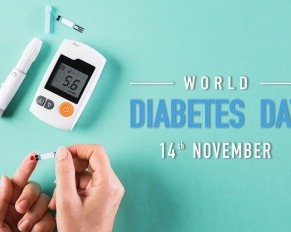National Diabetes Day: How Lifestyle Changes and Community Involvement Can Help Prevent Diabetes National Diabetes Day, observed each year, is…


National Diabetes Day: How Lifestyle Changes and Community Involvement Can Help Prevent Diabetes National Diabetes Day, observed each year, is…

Caring for a Loved One with Diabetes: Tips for Family Members November marks National Diabetes Month, a time to raise…

You may have heard the term disease management used a bit more in healthcare over the past few years. Essentially, disease management programs teach patients how to deal with a chronic disease. They focus upon getting patients to understand how to take care of themselves. As a result, patients learn how to avoid problems and how to keep their existing health problems from getting worse.
 Though most of us enjoy good health, we should never take it for granted. Always there is the fear of the unknown, something catastrophic that would take our good health away and that is the scariest notion. Like the Zika virus for instance. Or last year’s widespread flu epidemic since the virulent virus did not match the flu serum for the 2014-2015 flu season.
Though most of us enjoy good health, we should never take it for granted. Always there is the fear of the unknown, something catastrophic that would take our good health away and that is the scariest notion. Like the Zika virus for instance. Or last year’s widespread flu epidemic since the virulent virus did not match the flu serum for the 2014-2015 flu season.
But how about type 2 diabetes? While it is not classified as an infectious or communicable disease, the incidence of adult-onset diabetes is growing at an alarming rate, even showing up in teens and children. It is estimated that more than 29 million Americans have diabetes; unbelievably, about 8 million don’t even know they have the disease.

This guest post was written by Efraim Landa
Efraim Landa is the founder of Effi Enterprises a Venture capital firm that funds medical start ups.
Diabetes is on the rise in the United States. According to the 2014 National Diabetes Statistics Report, nearly 10 percent of the American population has diabetes, and more than 8 million are yet undiagnosed. Diabetes is a medical condition that is characterized by elevated blood sugar levels. The levels of blood sugar in the blood are controlled by the substance insulin. Insulin is a necessary pancreatic hormone, but in diabetics, it is produced less often, or the body simply does not respond the way it should to that insulin. There are two types of diabetes: type 1 and type 2. Type 1 diabetes is formerly known as juvenile diabetes or insulin-dependent diabetes. Type 2 diabetes is formerly known as adult-onset or non-insulin-dependent diabetes. There are a number of differences between these two types of diabetes. The first type of diabetes, type 1, typically occurs in childhood (but not always), and its causes are still unknown. Type 1 only accounts for between 5 and 10 percent of all diabetics. Type 2 diabetes typically occurs in adulthood (but can occur at nearly any age), and it is largely preventable. This article contains information on how to prevent the risk of type 2 diabetes.